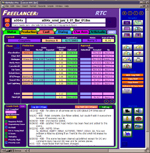
This DB started as a private tool for my team and ultimately grew to become the method of managing Cinematics, Audio, Motion Capture, and Base Design Depts for more than two years of production on the PC Game 'Freelancer.' This is one of the master status views. Note the Tabs to all the other corollary Depts that fed assets to my team.
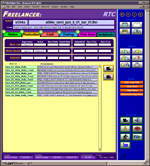
The Production pane was used to indicate any special shots or story boards that were applicable to a specific scene. Interestingly enough - though we originally planned to use them universally - we only created traditional previs storyboards for a few crucial scenes. Our proprietary authoring tool was so good that we would just rough block everything inside the game files thus skipping a whole layer of possible confusion.
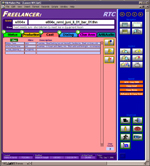
Though this scene has a small (virtual) cast, there were others with multiple characters. Especially early in our process it was very important that the cinematic animators could textually and visually confirm that they employed the right Art and Skeletons. This tracking also became important to the Art department in the final phases of production as they polished and sometimes even swapped character art for the best look.
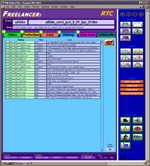
One of the most critical and productive functions of the database was its organization and regimented naming of files, and Audio files in particular. Once the script for the main story was locked it was actually the cinematics team that broke down every scene into lines and line segments using the database. The Audio team could then begin work directly from the resulting list, and thus our departments stayed very much in sync throughout production.
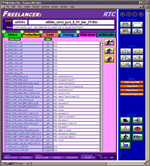
As you can see from this list any given scene employed dozens of character Animations. The authoring tool that the Cinematics team used had a highly effective blending tool-set for linking animations - thus blending a motion where a character was sitting back and listening with a motion of them leaning forward to say a line emphatically was a common methodology. These were two separate motions and as the Motion Capture team worked to refine all the animations it was critical to know every scene in which a given animation was used. If too much changed in one of the motions the blending in the scene could turn into an awkward movement.